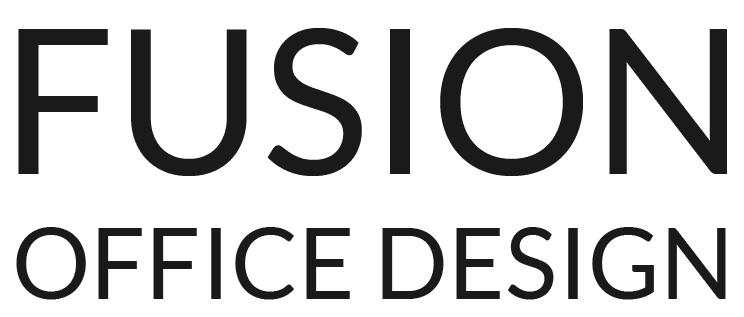10 Ways to Make Your Office Refurbishment Popular with Staff and a Success for Management
Refurbishing an office in London aimed at achieving popularity with your workers is largely about prioritising their well-being, comfort, and their needs for productivity and good work settings. Put more succinctly – prioritize your staffs needs in the project brief.
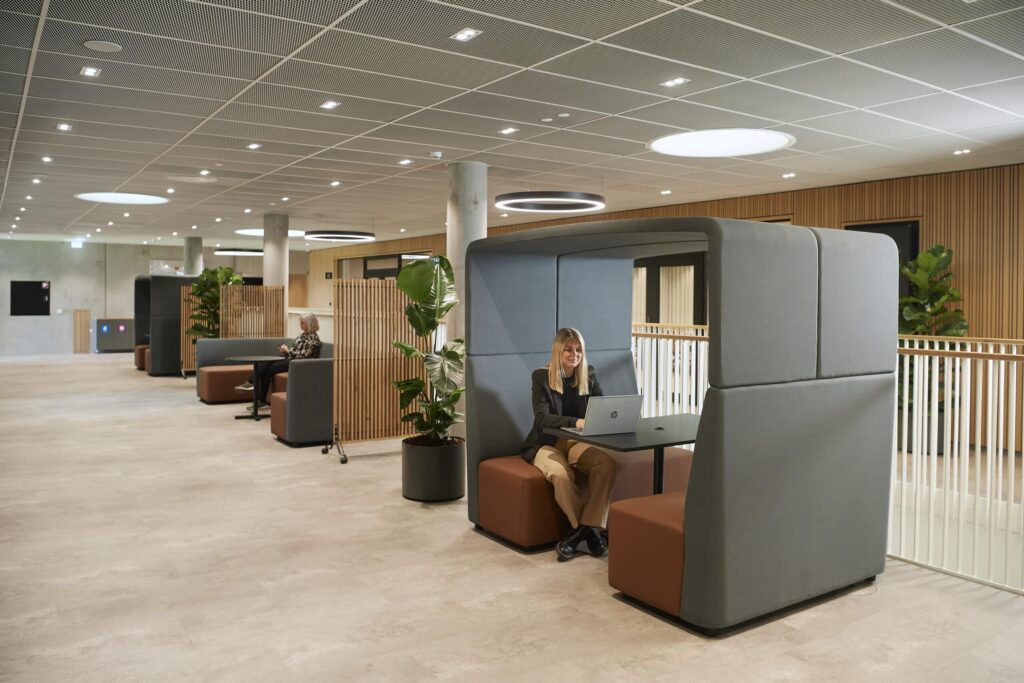
Top Ten Tips for An Office Refurb that’s Popular With Staff.
Using our experience as one of the leading office refurbishment companies in London, and bringing the hybrid office design trends into the mix, here’s our top ten tips for an office refurb to make it popular with staff:
- Bring Staff into the Design Process: Use internal discussion, survey replies and staff engagement to genuinely find out what staff are looking for from a refurbished office. What are the bottlenecks and deficiencies of the current office? Find out what they’d like to see in the new space through the use of mood boards, design workshops and external visits. Involving people always generates buy-in and ensures the final result gets a resounding endorsement as they’ve been involved. It extends the design phase but minimizes gripes.
- Ensure Ergonomics and Well-being are Factored in: Don’t simply invest in ergonomic furniture…make the case that the investment is for the staff. Features including adjustable desks and state of the art office chairs can be maximised in terms of impact when workers understand the features and benefits. Adopting well-being features like relaxation and yoga space, or quiet zones that work on several levels for mindfulness as well as focused working will be very popular.
- Redesign for Natural Light and Natural Elements: Greater access to natural light in the office is a proven mood booster. Helping staff to tune out distractions and bringing more energy into the interior. Be aware of light penetration when designing the office layout. Using glazed partitions, considering sun angles and views to the outside are all valuable design considerations. Using biophilic elements including living plants and popular natural materials (wood and stone) in a contemporary way, and art with themes from nature, all work well to connect the indoor space to the outdoors. These design features have proved popular with staff.
- Space Plan for Flexible and Hybrid Working: The hybrid office needs variety and using flexibility gives greater scope to adapt to work trends. Add in task-based working such as:
- Quiet zones or noise reducing pods for concentration work. More flexible and adaptable than simply building partitioned rooms.
- Collaborative space with white boards and technology for teamwork, remote and in-office.
- Informal breakout spaces (small team huddle space, coffee area) for casual meetings, quick get-togethers and relaxing.
- An area that can flex as business and design trends come into effect. Future proofing in other words.
- Utilise Technology: make best use of high speed Wi-Fi to free up work settings. Use the refurb process to add plenty of accessible power outlets. Investigate audio-visual solutions that are easy to use, reliable and effective, especially with hybrid work.
- Create a Hub/Tea point Area: All offices have tea points. Boosting the space to make it welcoming and well equipped is a popular upgrade. Also a well-designed kitchen can easily form a communal area that encourages interaction and team gathering. There are so many design styles that add a whole extra dimension to the office. An office refurbishment is the ideal time to bring personality and good services into one of the most valued of zones.
- Reconsider Office Layout and Work Flow: Redesigning the floor plan during the refurb process can re-engineer the floor space for changes in the organisation. This can capture efficient work flow and eliminate bottlenecks. Re-evaluate space per person and consider rebalancing allocation of space away from past uses towards hybrid or agile working models. Good use of furniture reinvigorates layout and use of space making the office interior feel on-trend.
- Consider Acoustics and Noise reduction: Distraction can be a significant productivity killer. A redesign is the best time to incorporate acoustic panels, sound-absorbing materials, and quiet zones to manage sound. Enclosed pods and booths have proven to be amongst the most popular furnishing solutions when space planned in the ideal locations rather than simply plonked into any space. Too many offices have adopted noise reduction as an afterthought which reduces effectiveness and forms a disjointed design impact.
- Update the Use of Brand Identity and Business Culture: Your office and org culture will undoubtedly have evolved over time. The design aesthetic will also have moved ahead. Use the refurb as an opportunity to reflect both current and desired identity and culture. The design process is the perfect way to introduce new ideas, to create a sense of belonging, and focus on a positive office culture. This makes the revitalised office space feel fresh and inspiring.
- Use Communication to Boost Buy-In: The best office refurbishments can be more popular if staff feel included at all stages. Use regular updates, transparency over timelines, and clear explanations about why the refurb is taking its particular course. Convey the design intent to explain how to use the new interior effectively.
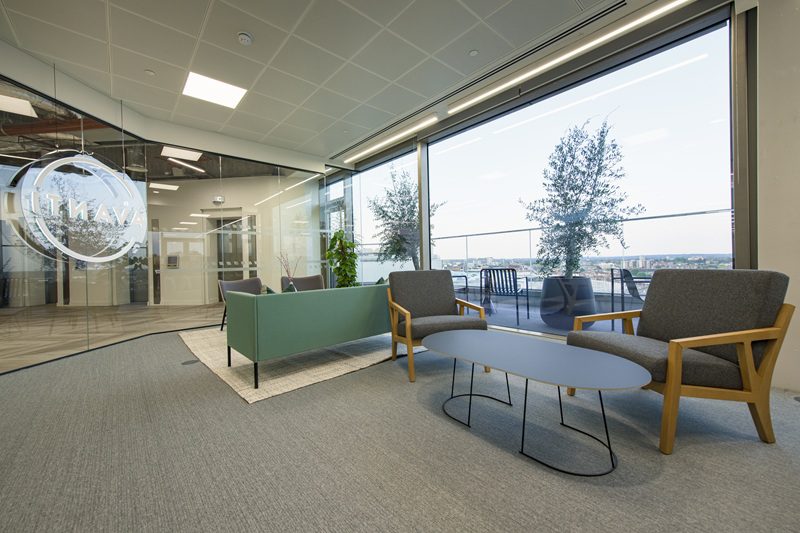
This list of 10 top tips for a popular office refurbishment is proven to increase the perceived value of a project for staff. The tips may not involve any additional cost whatsoever and are sure to improve the feel-good around the organisation. Creating more buzz is sure to have positive spill-over and a longer lasting improvement in workers perception of their company.
Fusion Office Design understand that there’s also the needs of the organisation to consider. In the next section we look in more detail at what makes a refurb ‘good’ for the business and ask another vital question…
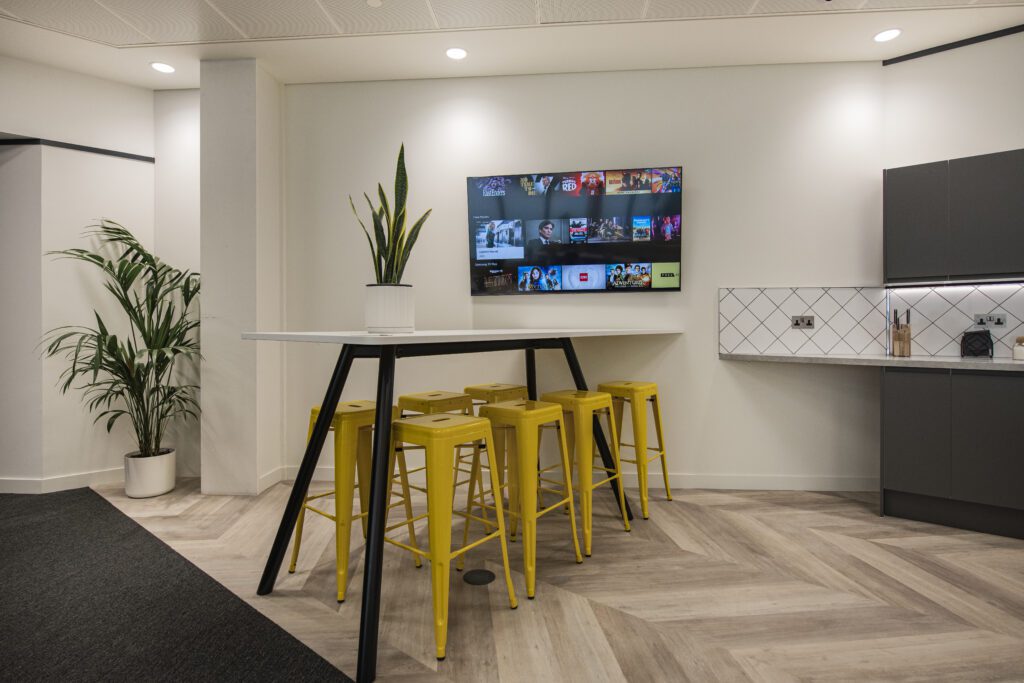
What is a Successful Office Refurbishment for the Organisation and Senior Management?
Having covered the ‘popular with staff’ aspects, in this section we look at the motives of the people setting the budget and quantifying the return on investment for the office refurb.
At the very top of a hierarchy of needs a successful office refurbishment for the organisation needs to be strategically aligned with the senior management team’s business objectives.
Fusion have compiled a top ten tips for an office refurbishment to make it a success for the senior management team, focusing on business value and strategic goals:
Top Ten Tips for a Successful Office Refurbishment for the Senior Management Team
- Start with Business Objectives
-
- For Senior Management: Any refurbishment needs to solve a core business problem or support a strategic goal such as attract/retain talent, adopt or develop new ways of working such as a hybrid office. Well defined objectives are easier to measure. Some may be more intangible for instance to increase collaboration or bring in a new business culture. Where there is a clear financial target such as reducing space, uplifting space-efficiency and cutting cost-per-desk these can be woven into the design process.
- Action: Senior management can give clear instructions on the desired, measurable, business outcomes before the design work. These defined targets are also an ideal way to test out how well the refurbishment designer is listening to the brief.
- SMT Project Champion
-
- A decision-maker must own the project and be its champion. Not only will this give swift decision-making, it will also provide a conduit between the senior team and the implementation team, and between SMT and staff. Its all about decent communication. Having a project champion helps maintain strategic alignment from the brief through to the delivered office refurbishment scheme. A senior management presence helps confluence of budget, quality and timeline…what’s known as the project triangle.
- Action: Set a visionary, organized, internal leader as the single point of decision for the high level decision making and accountability within the project.
- Research a Realistic Budget with Contingency
-
- For Senior Management: There is plenty of data available to support decisions on budget. Our own Per Square Foot data for office refurbishment costs is compiled from real world figures, which you can find here. Tight financial control is established using a detailed budget. Include soft costs (fees, IT, furniture, temporary moves) and a contingency figure (typically 5-7.5% on a design and build scheme) for unknowable problems.
- Action: Set a portion of the budget to achieve the spending on elements that directly support the strategic objectives (e.g., investing in technology for hybrid work or ergonomic furniture for wellbeing).
- Future-Proof the Office Refurbishment
-
- For Senior Management: Flexibility supports future proofing. The design should support growth and changes in org structure. New and developing work styles will ask the office to adapt. The modern office refurbishment will have more flexibility inbuilt.
- Action: Increase the use of flexible, multi-purpose, spaces that can be reconfigured at low, or zero, cost. Design for breakout areas that double as informal meeting spots. Use mobile furniture. Make more use of furniture and less of fixed joinery.
- Reflect and Reinforce Business Culture and Personality
-
- For Senior Management: The office is a physical manifestation of the culture as it is, or as it could be. Use the refurbishment to reinforce shared values, mission, and culture. Use the office as a silent CEO to lead workers and convey shared purposes. By creating an inspiring environment for staff and good first impression for clients you’ll boost the organisation.
- Action: Develop or convey the business message, and design elements that tell the company’s story and reflect its outlook. To some this can sound ethereal but even a brief outline of objectives for the refurb on this aspect can help office designers steer the project in a better direction.
- Use Employee Wellbeing As a Motivational Filip
-
- For Senior Management: Good offices are increasingly seen as drivers for retention and recruitment. Productivity should be enhanced. Explaining how the design promotes physical and mental health will get more from the investment by conveying the advantages and benefits.
- Action: Boosting natural light and using ergonomic furniture, biophilic design (plants/nature), and defined spaces for focused work all form part of the brief for a modern office. Collaboration and communication help people do their jobs and to make the most of time in the office.
- Integrate and Explore Office Technology
-
- For Senior Management: As tech is the driving force behind changes in modern work styles, particularly with hybrid working, it can be beneficial to integrate good tech. The refurbishment is the ideal time to update IT infrastructure and add on new functionality.
- Action: Set out the look and feel of tech and what it will do to enhance the working day. Does tech work with smart building systems to lower opex? What can technology do for employees, and for the business, that will result in measurable improvements to justify the investment?
- Select the Right Refurbishment Partner (Design & Build)
-
- For Senior Management: This is about more than finding a reliable fit-out specialist or design-and-build partner. The best collaborations are where the office refurb company aligns closely with your way or working and project objectives. A proven track record is a great start. Working out who listens, and brings value, are critical aspects. Getting alignment reduces risk and reduces the burden of disruption from the project.
- Action: Scrutinise possible partners based on their comparable project experience, financial stability, and track record of delivery on time and within the agreed budget.
- Lead the Communications
-
- For Senior Management: Poorly managed change creates uncertainty and disruption, and widens the likelihood of mistakes. The project sponsor must champion transparency and communicate regularly with all staff.
- Action: Use regular updates (project meetings, staff newsletters, forums) to explain the strategic targets for the change, the critical timeline, and how disruption will be handled with impacts on departments. Set up a cross-functional team (including HR and IT) for staff feedback.
- Minimize Disruption to Business Operations
-
- For Senior Management: Risk to operational / business continuity is paramount. Understanding how a program of works overlaps with business continuity is a valuable role for the project champion. Ultimate responsibility for health and safety also resides with the senior management team. Scrutiny of both these aspects is an important high-level task.
- Action: Who is stress testing workflow against proposed project timelines? Will strategically scheduling work using a phased approach or working outside business hours be required? These should be the questions asked and answered. Arrange temporary “swing space” or increased remote work support to maintain business function during construction. Join up the implications of continuity requirements with the budget.
Its easy to set out a high level objective for a refurb scheme to yield a better office. By breaking this down into topics and setting out senior-level scrutiny its more likely to result in a great office that delivers value, motivation, engagement and return on investment. And wins on all these fronts combine to make a better business.
Combining the tips for a successful project for the company with tips to make a refurbishment popular with staff is where the depth of expertise offered by Fusion Office Design leads the field in office refurbishment companies London .
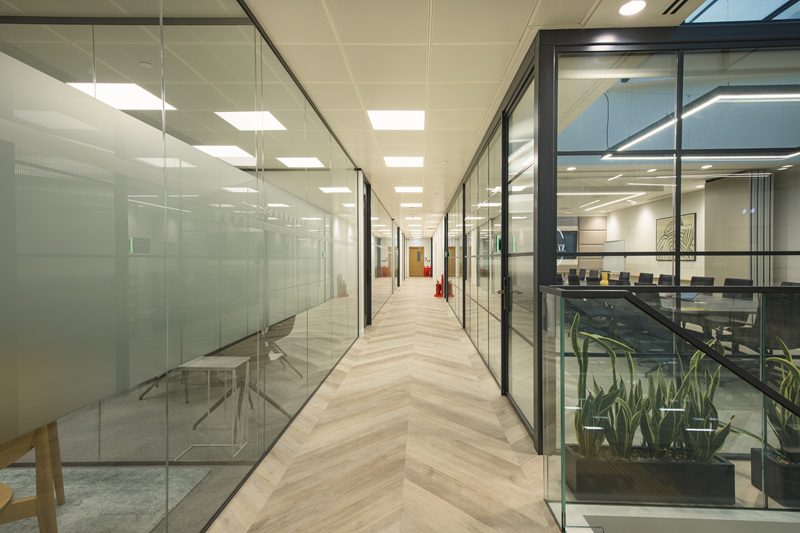
Want to discuss your project?
Contact Fusion Office Design for a no-obligation chat, with no project being too big or too small. Whether you’re looking to upgrade a meeting room or undertake a full office refurbishment, Fusion are here to help.
Let’s design a workspace where your people can do their best work, every day.
